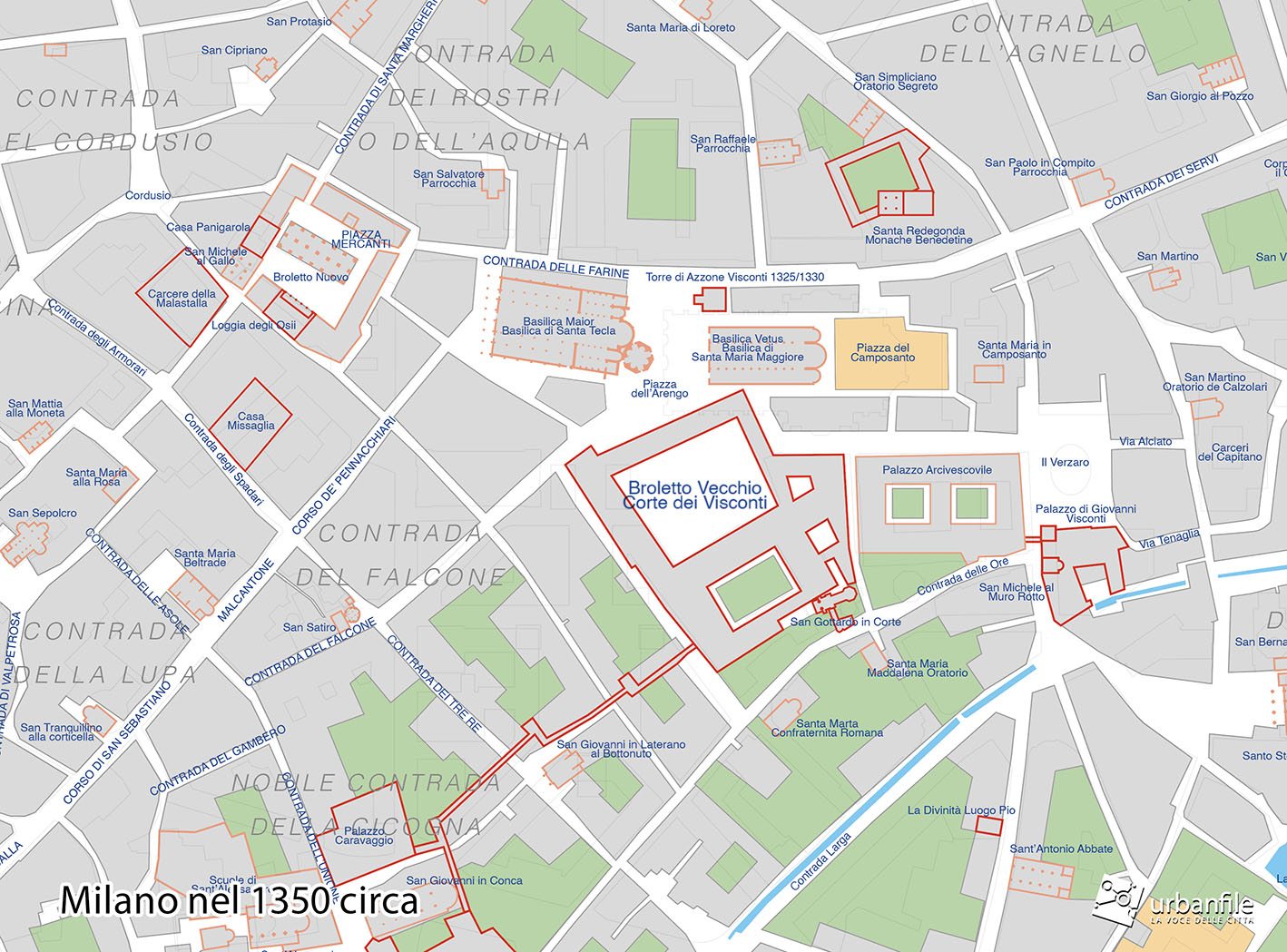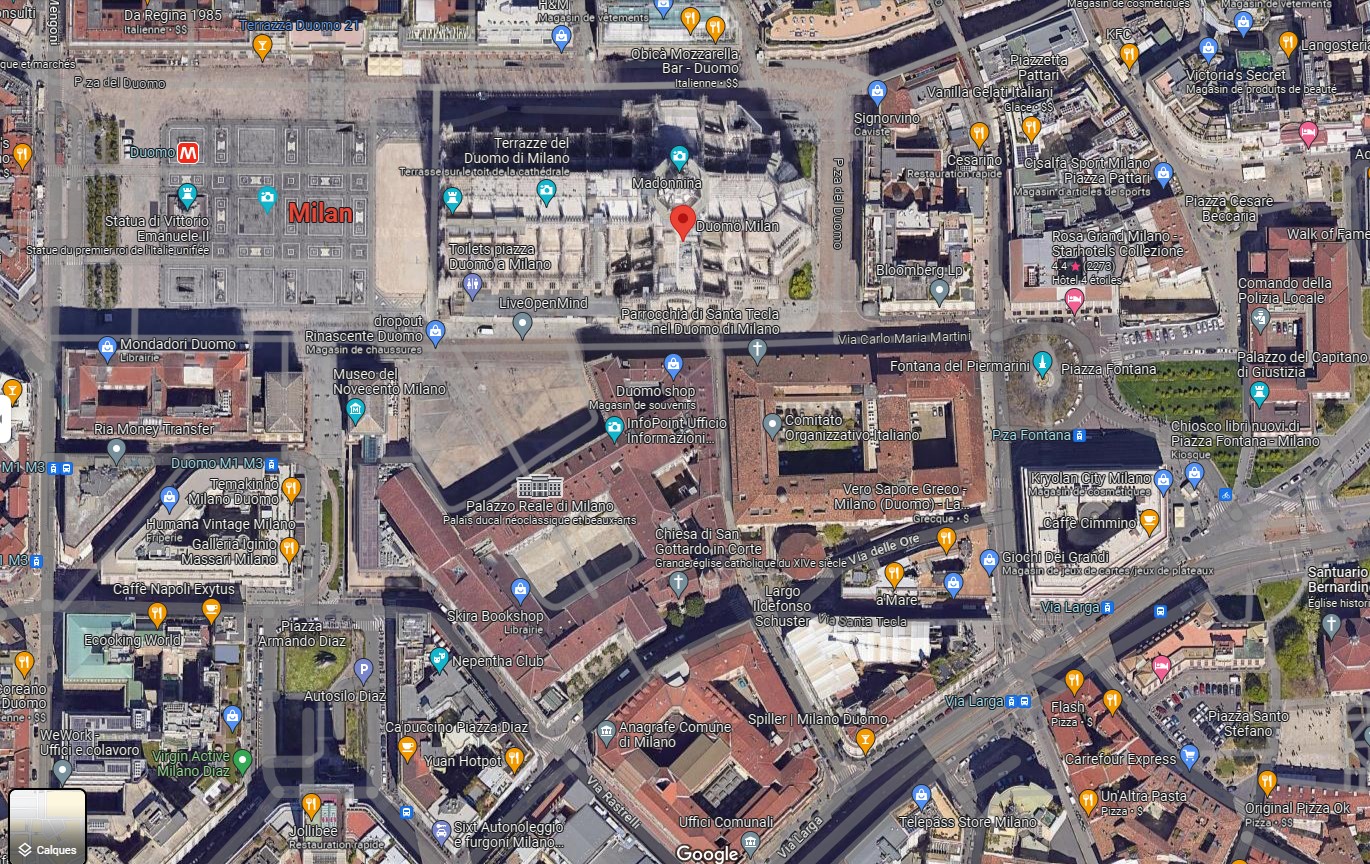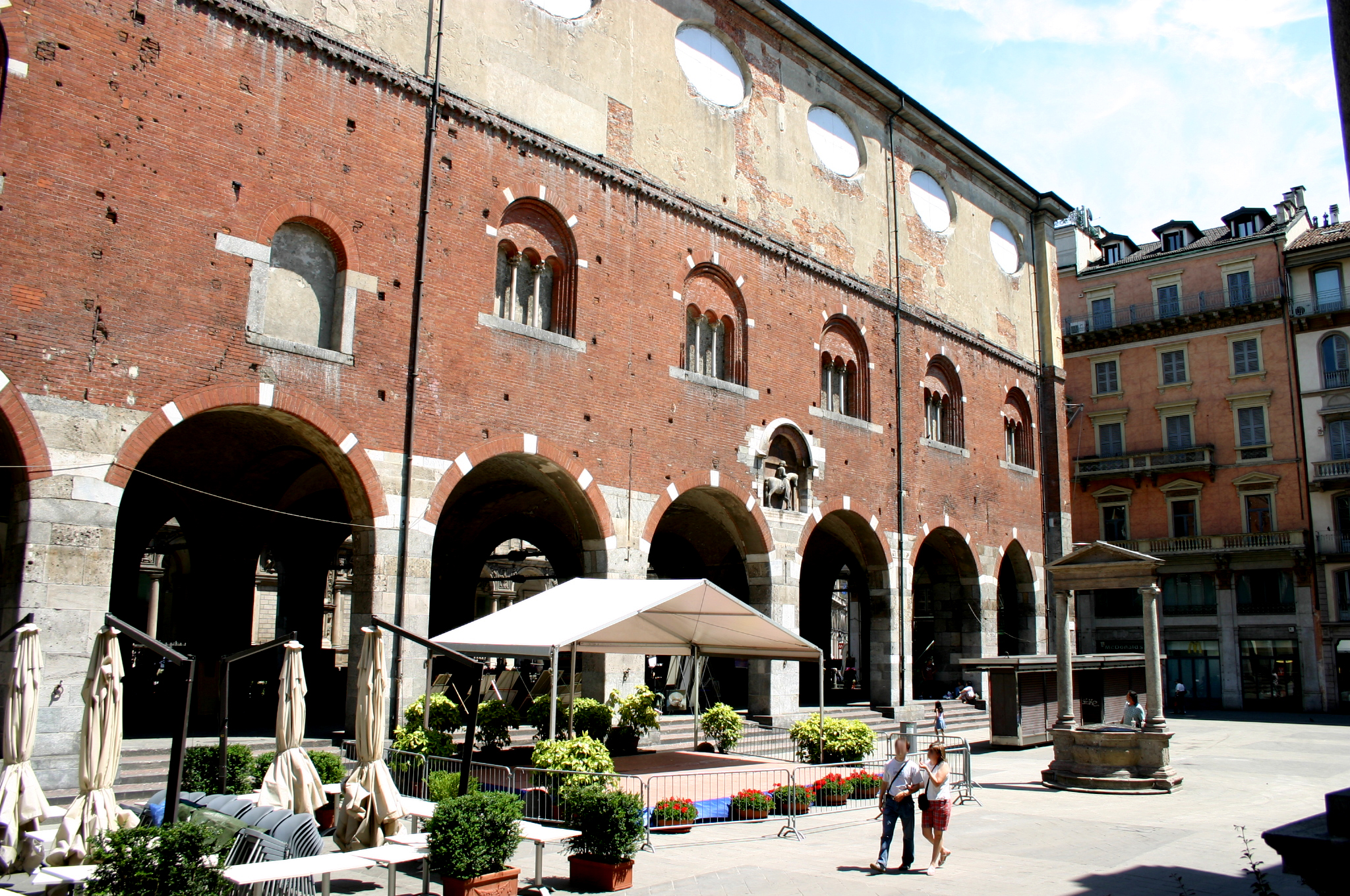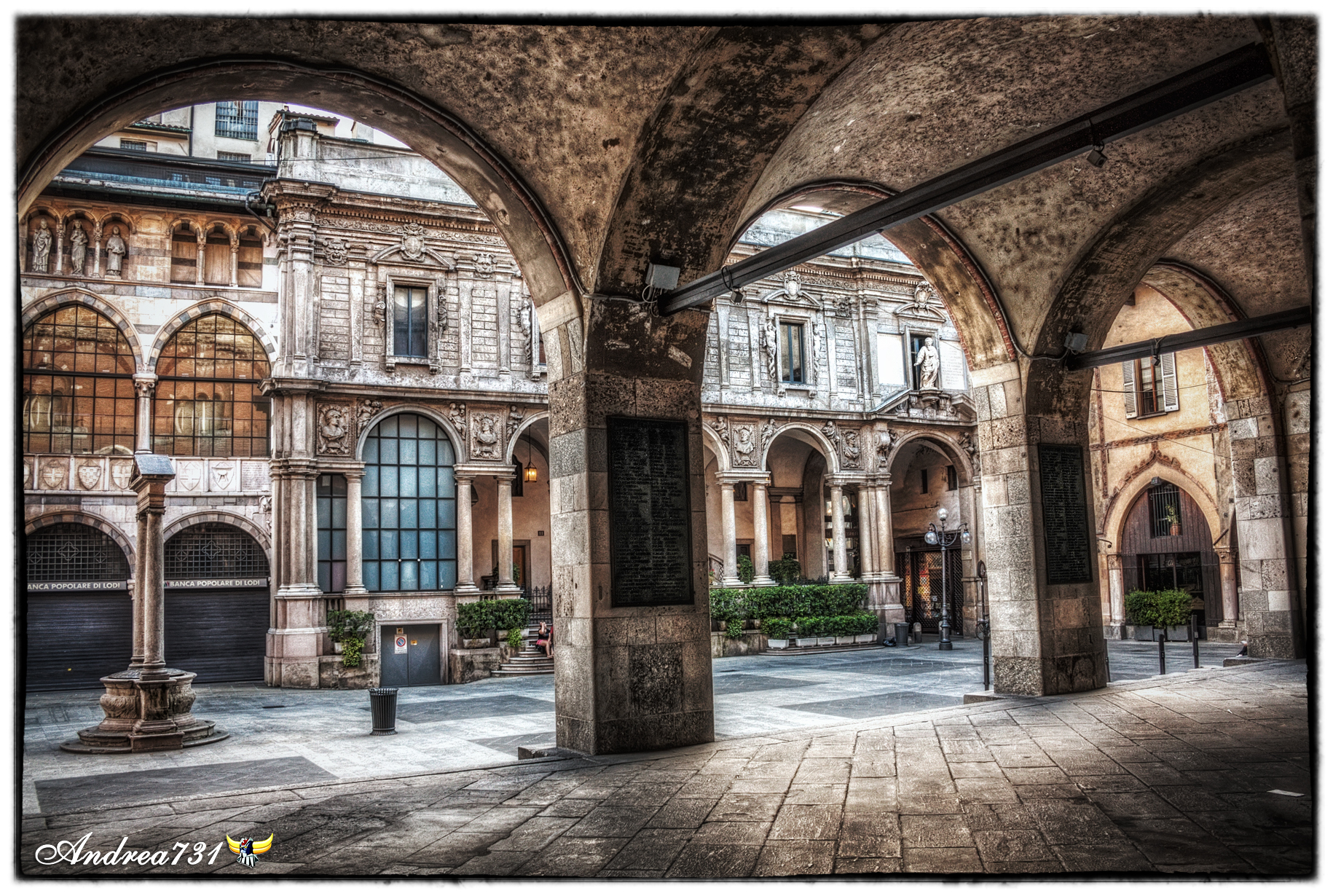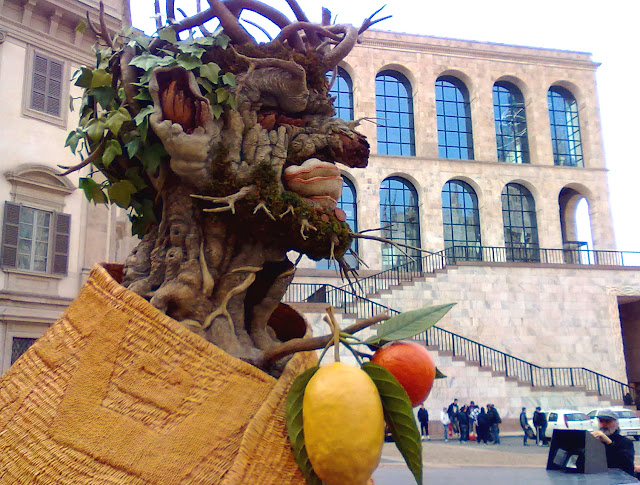Local idioms are always tough, but the passage in question specifically speaks of feeding the birds, so literal. But the reminder that certain of the German luxury decks with birds likely influenced Marziano's choice of bird suits is a good one. I'm looking more at the general theme of "leisure" as found in Marziano - the large hunting grounds that abutted the rear of the Pavia palazzo (which would have involved fowl among other quarry), Azzone Visconti's zoo and whatever was left of it by Filippo's time, the singing birds at the Arengo (nightingales or something more exotic imported from who knows where, perhaps descendants from specimens of Azzone's zoo? [missed Ross's post on previous page - Decembrio info]), and of course Marziano's bird-themed playing cards are all part and parcel of Visconti noble leisurely pursuits. Given the strong presence of birds, the notion of "singing/playing birds" is not out of the question as slang for a noble leisure pursuit, but not for the passage in question.Huck wrote: 05 Jul 2023, 20:05 Phaeded wrote ...Independent of your question I had reached the idea, that a man, who cared for chess game sets and table games, might easily also had been responsible for playing cards. This and the observation, that the Michelino deck had birds as suit signs and also old German decks used birds as decoration for playing cards, points to the possibility, that "singing birds" might be just another expression for playing cards in a group of players or gamblers. Well, that's only a possibility and I don't see a chance to be secure about it.Either one of you care to offer a reason for the odd juxtaposition of singing birds and gaming boards?
Surely there were earlier pre-Marziano versions of the Stuttgart and Ambras Court hunting cards featuring birds (and hounds and deer), and the Visconti intermarried with the southern German nobility associated with these decks.
https://cards.old.no/1430-stuttgart/
https://cards.old.no/1440-hofjagdspiel/
Marziano: "And subordinated to these are four kinds of birds, being suited by similarity. Thus to the rank of virtues, the Eagle; of riches, the Phoenix; of continence, the Turtledove; of pleasure, the Dove. And each one obeys its own king...."

Though not mounted, there is even a King of Turtledoves/Coins in the CY
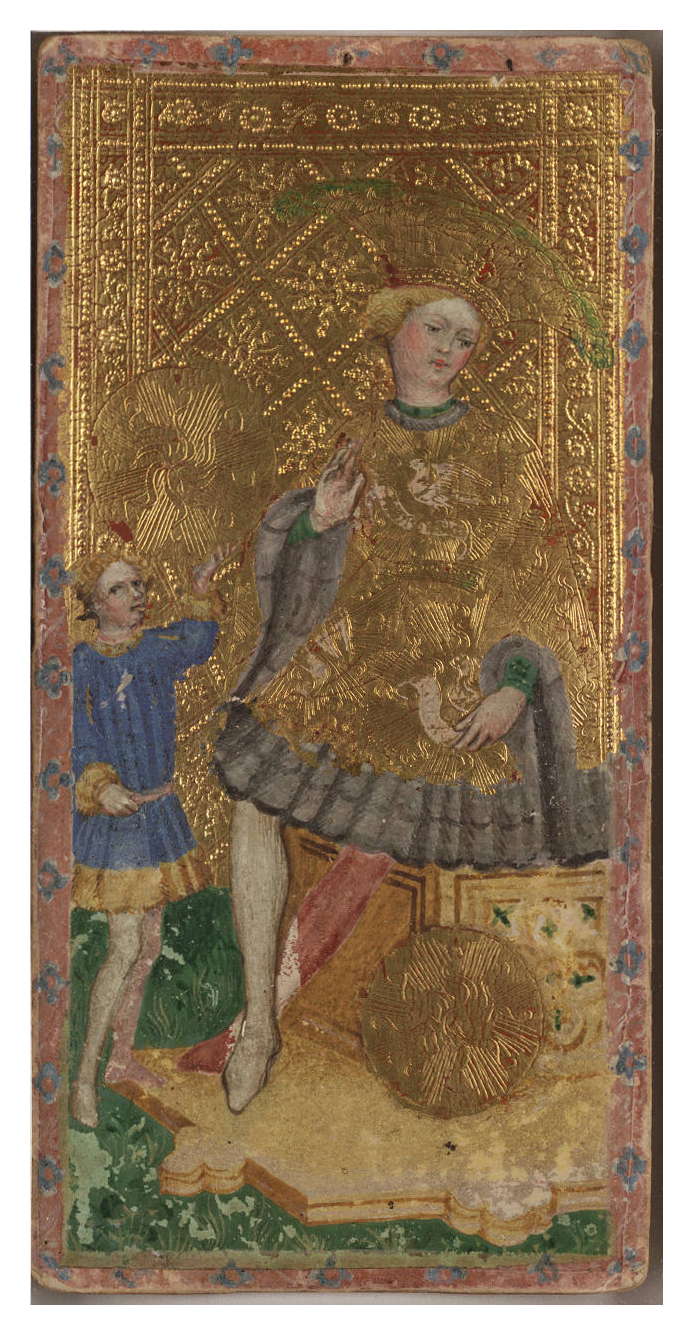
The knight of turtledoves/coins being mounted a bit closer looking to the Ambras: https://upload.wikimedia.org/wikipedia/ ... _Coins.jpg
The king of cups having a much more similar to headpiece to the Ambras king: https://i.pinimg.com/originals/b8/2e/33 ... 16db70.jpg
Shared copybooks may have been at play here, as we know dei Grassi's work was copied in Germany (and whose Visconti Hours are littered with birds, especially leaves BR151 and LF34; in which case Grassi could have influenced the Germans who in turn influenced Michelino's Marziano deck, but of course that last does not survive).


